Introduction

“Power corrupts, and absolute power corrupts absolutely”.
You’ve heard this before, I’m sure – but there also is such a thing as too much power, although oligarchs, dictators and racers will try to convince you otherwise. The world’s quickest motorcycles are only as quick as the rickshaw moving over in our country, so a middleweight motorcycle will make more sense. That’s the role that the Kawasaki Z800 hopes to play; it is the voice of reason in the insane world of the CBU motorcycle in the Indian marketplace. But does its sanity make a good enough case to pass up the extra 200cc and the frills that come along with it?
Looks & Styling

The Z1000 is pure evil as far as looks are concerned, and the Z800 looks similar. Of course, it is the little brother, so it doesn’t go all the way for the hairy-chested aggression of the former, but it does still manage to make a pretty strong style statement. It still has the hunchback profile, and you still wouldn’t want to meet it in a dark, lonely alley any time of the day or night, but where the Z1000 is all metallic grey accented by Kawasaki racing green, the Z800 is a combination of matt black and gloss black. There are the barest hints of the green we’re so familiar with, with a single stripe under the ‘Z’ on the sides, the ‘800’ badging in green, and rim tapes. Otherwise, it flies in stealth mode.


Other things that differentiate it from the Z1000 are the bulb-and-reflector headlamp that is shaped like a cartoon superhero’s face mask, smaller brakes and black callipers that aren’t radially mounted, traditional mirrors and stalks, silver brake and clutch levers, a rear brake calliper that is mounted on top of rather than below the swingarm, a crankcase that is concave rather than convex like the 1000’s, a belly scoop that doesn’t wrap around the exhaust pipes at the bottom, and an exhaust canister that is completely matt black on the sides rather than with a silver accent of the big brother. It is silver-tipped, which makes the rear three-quarter view quite an interesting one. Dead-on from the rear is the perfect way to view this motorcycle, though, the star-shaped LED tail-lamp and wide rear tyre works wonders for the rear looks. A detail that gives it points over the 1000 is the raised lines on the sides of the engine that parallel the other lines of the motorcycle. The Z1000 doesn’t have this detailing, and the rear footpegs of the 1000 are suspended from traditional hangers. The Z800 passes up on these for a sportbike-style subframe that originates from the front footpegs’ location itself, giving the tail and underbody a cleaner look.


It still remains a large motorcycle by Indian standards, but it’s just not noticeable for the most part. Coupled with the silent exhaust, people don’t usually move over when you’re riding the Z800, so if you’re one of those who wants traffic to part like the Red Sea did before Moses, this isn’t the motorcycle for you.
Instrumentation & Seating

The key fits into the tank-mounted ignition switch, but the instrument cluster sits on top of the headlamp. It is a small, all-digital cluster but is divided vertically into three parts. The left displays coolant temperature, odo and trip readings, and a clock, while the right is dominated by the speedo and supported by a multi-function display and fuel gauge. The middle is reserved exclusively for the digital tachometer – the LCD lines climb on either side of the split as the revs rise. Flanking the display are the various warning and information lights, and on the top left is placed two buttons that can cycle through the multi-function display’s many different settings, and reset the tripmeters.


The seating position of the Z800 is probably the easiest of the lot of big motorcycles, and the controls are familiar ones as well. There is no switchable traction control and you can’t turn the ABS off, so what you see on a 150cc motorcycle is what you get on the Z800 as well. The brake lever adjusts for reach, and that’s all the adjustment you can make on the fly with the controls. The seat is low and padded well enough to be comfortable for a few hours, but out of necessity the padding is firm and can be painful on a long day’s ride. The pillion seat is present, but full-size adults will find it a squeeze. The integrated grabrails are a neat design feature and help keep the tail looking clean.
Engine & Gearbox

The Z800 has an 806cc inline four cylinder engine that generates 111bhp and 83Nm. This does not sound like much when you realise it weighs 231kg, but all that mass is centralised, which means it feels really nimble even at walking pace. The engine’s power delivery is very subtle below 3000rpm, then it is quite strong until the midrange kicks in at 7000rpm or so. Beyond that, the engine’s exhaust note contributes just as much as the torque curve to the impression of speed. To those used to a litre-class motorcycle, the Z800 might feel a little slow, but to the first-time superbike owner, the motorcycle’s performance is much than adequate; it will keep you entertained for a long, long time. The lack of traction control is a non-issue in the dry because of the way the power is delivered. However, the throttle needs to be respected in the wet or with cold tyres, as with any other large motorcycle.

The close-ratio six-speed gearbox has ratios that are matched really well to the motorcycle’s requirements. Scything through rush hour traffic is easy – just drop the engine to around 3000rpm, and you’ll be crawling along at really low speeds without the need to continually slip the clutch. Out on the highway, cruising at 120kmph will make the ‘efficient riding’ indicator light up, which is a different kind of pleasure in itself.
Ride & Handling

The Z series of motorcycles have been conceived for city usage, and as such the wide, tall handlebar and forgiving riding position make it really easy to manoeuvre at low speeds. The Z800 isn’t as demanding of proper riding technique as other big motorcycles – in fact, the only other big recent motorcycle that could be similarly manhandled was the Harley-Davidson Street 750. What this means is that someone buying their first big motorcycle will be able to adapt fairly quickly to the Z800. Out on the highway, the Z takes everything into its stride, giving even rookies the confidence to try and up their pace. The brakes have ABS topping their ferocious bite and remarkable progression, and that alone gives you the confidence to try and push the Z800.

We didn’t play around with the adjustable rear suspension, but it is suffice to say that a few turns will quickly change the Z800 from a comfortable city machine to a weekend corner carver quite effectively.
Verdict

The notion of ‘enough power’ might seem a little strange when you’re dropping around Rs 9 lakh on a four-cylinder imported motorcycle, but when it is packaged with enough practicality that it is almost as usable as a locally-manufactured product, it makes a compelling case for itself. The Z800 is one of the two big motorcycles I have ridden recently that are genuinely not intimidating for someone who might upgrade from a 250cc motorcycle, and it should be everyone’s first four-cylinder motorcycle before they graduate to the missiles we call litre-class motorcycles. The other feature of the Z800 that tugs at my heartstrings is its duality – it is equally happy to let you ride the torque curve low down in the rev range, or scream its way through every single corner’s apex.
If you’re considering a big two-wheeler, the Kawasaki Z800 is the correct first step to take, lack of Kawasaki Racing Green and action control notwithstanding.
Gallery
1/37
Double Tap to Zoom











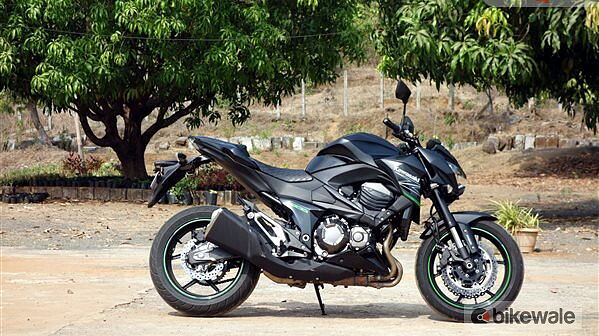












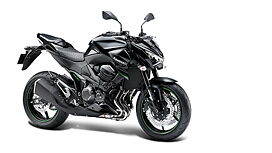
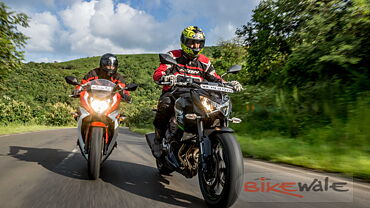















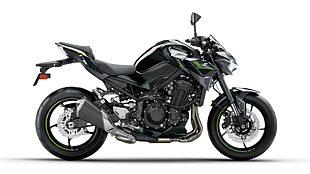
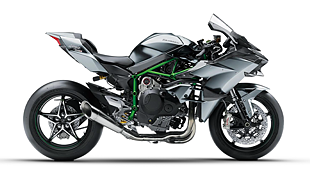






![KTM 390 Adventure X [2025] KTM 390 Adventure X [2025]](https://imgd.aeplcdn.com/272x153/n/cw/ec/190885/390-adventure-x-2025-right-side-view.jpeg?isig=0&q=80)